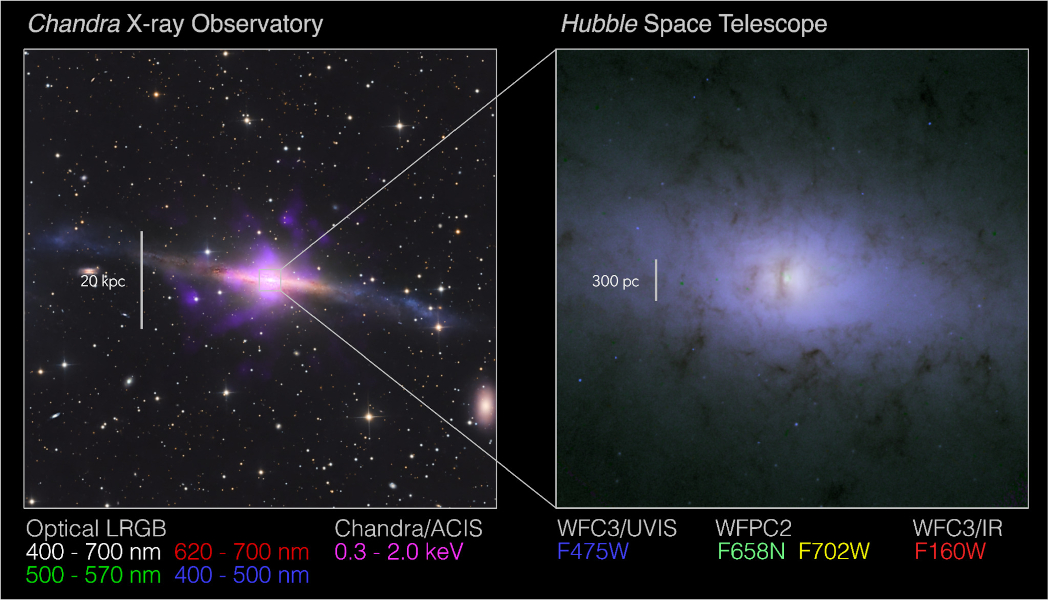
 Credit: Borlaff, A., et al., 2024, The Astrophysical Journal
Credit: Borlaff, A., et al., 2024, The Astrophysical Journal
Why Does X Mark the Spot?
Supermassive black holes exist at the centers of all, or almost all, galaxies. It's not clear how they got there or why they have such enormous masses - containing billions or even trillions of times the mass of our Sun, rivaling the mass of their host galaxy. It's also not clear yet how exactly the black hole affects the host galaxy, or vice-versa, though indirect evidence suggests a fairly strong connection. Some of these central supermassive black holes, like the one near the center of the MIlky Way, are dormant, with little associated electromagnetic radiation. Others are actively swallowing gas and dust from their host galaxies, producing a violent, hot, rotating accretion disk centered on the black hole, and powering high-energy radiation and enormous beams of particles shooting into intergalactic space. The particle beams are usually emitted perpendicular to the disk of the galaxy, another indication of a fundamental connection between the central supermassive black hole and the host galaxy. But a new analysis of images from the NASA data archives of an unusual galaxy has shown that this simple picture may be more complicated. The image above shows an image of a galaxy, called NGC 5084, in an archival Chandra X-ray Observatory X-ray image (left, in purple) superimposed on an optical image of NGC 5084, and, on the right, a zoomed in image on the center of the galaxy from the Hubble Space Telescope archives.
The Chandra X-ray image was enhanced using a new technique called "Selective Amplification of Ultra Noisy Astronomical Signal", which helps scienists identify faint extended X-ray features.
The processed X-ray image shows a cross-like pattern of extended hot, X-ray emitting gas centered on the galaxy. One arm of the cross lies along the plane of the NGC 5084, while the other arm is perpendicular to it. The Hubble image of the center of the galaxy reveals a dark torus of dust at the center of the galaxy, about 300 parsecs (about 1000 lightyears) long, which appears to be rotating. Astronomers believe this dark lane may be the dusty torus surrounding a hidden supermassive black hole at the center of NGC 5084. Detailed radio maps of the galaxy also show what appears to be emission from particle beams produced by the central black hole emanating perpendicular to the torus, in the galactic plane. But the X-shaped X-ray structure, and the tilt of the toruse, perpendicular to the plane of NGC 5084, are unusual for most observed active galaxies. This may suggest that the torus and particle beam changed its orientation by 90 degrees in the distant past, possibly due to an ancient collision with another galaxy.
Published: January 6, 2025
<
HEA Dictionary ● Archive
● Search HEAPOW
● Other Languages
● HEAPOW on Facebook
● Download all Images
● Education ● HEAD
>
Each week the HEASARC
brings you new, exciting and beautiful images from X-ray and Gamma ray
astronomy. Check back each week and be sure to check out the HEAPOW archive!
Page Author: Dr. Michael F. Corcoran
Last modified Tuesday, 14-Jan-2025 15:19:28 EST


